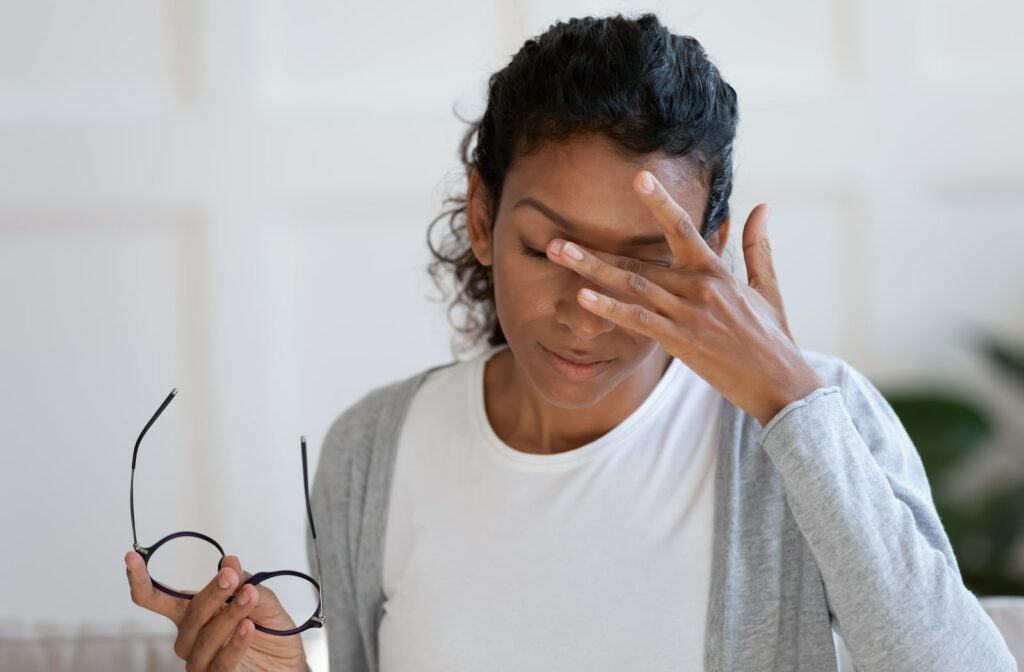Dry eyes are more prevalent in people over 50, but anyone can experience the uncomfortable symptoms. Symptoms of dry eye can range from mild to severe depending on eye care and health.
Symptoms of dry eyes are usually temporary and get better but may not entirely disappear. Long-term or chronic dry eyes can lead to more profound vision problems, including partial or total blindness in some cases.
There are treatment options, so no one has to live with dry and uncomfortable eyes. Investing in regular eye exams can help identify any eye conditions before they get worse. Understanding dry eyes and knowing the symptoms can prevent vision loss.
What is Dry Eye?
Simply put, dry eye syndrome is due to less lubrication. The causes include lack of tear production, low-quality tears, or tears drying up too fast.
The imbalance irritates the eye and presents with the following symptoms:
- Dry, gritty, and itchy eyes
- Burning sensation
- Red eyes
- Tearing or excessive watering
- Eye pain or soreness
- Light sensitivity
Causes of Dry Eyes
If you experience dry eye symptoms and are unsure of the cause, your optometrist can determine the underlying cause. They are usually from one or a combination of the following:
- Allergies: Symptoms are often from seasonal allergies like hay fever.
- Exposure to elements: Air pollution, wind, and dust particles can irritate the eyes resulting in chronic inflammation and irritation that can affect the tear films.
- Long-term use of contact lenses: Half of all contact lens wearers experience lens-related dry eyes. They result in less tear production than usual, and the risk increases with the length and number of contacts worn.
- Medications: Medications can cause dry eyes where the most common ones link to the quality and quantity of tears. These include antidepressants, blood pressure medication, birth control, hormone replacement therapy, acne medication, antihistamines, and medication used to treat glaucoma.
- Refractive surgery: 95% of people reported dry eyes after LASIK.
- Medical conditions: Autoimmune disorders such as Sjögren’s syndrome, arthritis, lupus, and diabetes cause poor tear production.
- Computer use: Long hours spent in front of a screen leads to infrequent blinking and more evaporation of tears.
- Inflammation: Blepharitis is inflammation of the eyelid that results in dry eyes and oily flakes around the eyelashes.
Long-term Effects of Dry Eyes
Many people have dry eyes for prolonged periods, with symptoms lasting for weeks or months. In such cases, it can lead to complications and vision impairment.
If the symptoms persist, you can experience a decreased ability to adapt to darkness, such as driving at night. Continued damage to the eye can eventually lead to scars on the cornea. There is also an increased risk of infection that can result in blurred vision.
Dry Eyes and Blindness
Due to the lack of attention or treatment, dry eye disease can lead to long-term complications. Chronic inflammation and irritation can affect the tear films and result in scarring and damage to the cornea, the part of the eye that allows light to enter.
Corneal damage is the fourth leading cause of blindness. Corneal scratches, ulcers, and eye infections can cause corneal scarring, resulting in permanent damage to vision.
Your eye doctor may prescribe medications or recommend surgery to remove scar tissue and keep inflammation levels under control. Many people can have a better quality of life without risking blindness with treatment and care.
Preventing Dry Eyes
If you have dry eyes or suspect you do, contact your eye doctor immediately. There are ways to prevent it through treatment and simple steps to manage the discomfort:
- Prevent contact lens-related dry eye by changing your care routine or using one type of lens over another.
- Use over-the-counter artificial tears. Artificial tears are a great way to help reduce your symptoms until your eye doctor can diagnose the cause and provide a solution.
- Use a humidifier regularly to maintain moisture levels in the air, especially on dry and windy days.
- Take regular breaks when working on the computer and blink more often. Remember the 20/20/20 rule-of-thumb: Every 20 minutes of screentime, take a 20 second break, look 20 feet away, and make some good deliberate blinks.
- Use prescription eye drops or in-office treatments to increase tears and decrease inflammation.
- Tear plugs keep tears in the eye and prevent draining before lubricating the eyes.
Find a Solution for Dry Eyes at Perry & Morgan EyeCare
Severe cases of dry eyes can lead to other serious eye conditions that can cause permanent damage to your vision, especially if left untreated. The optometrists at Perry & Morgan EyeCare offer immediate dry eye relief and will help treat the root cause.
Knowing what causes dry eyes can help you care for your eyes better. Schedule a consultation today to discover the difference dry eye therapy can make.



